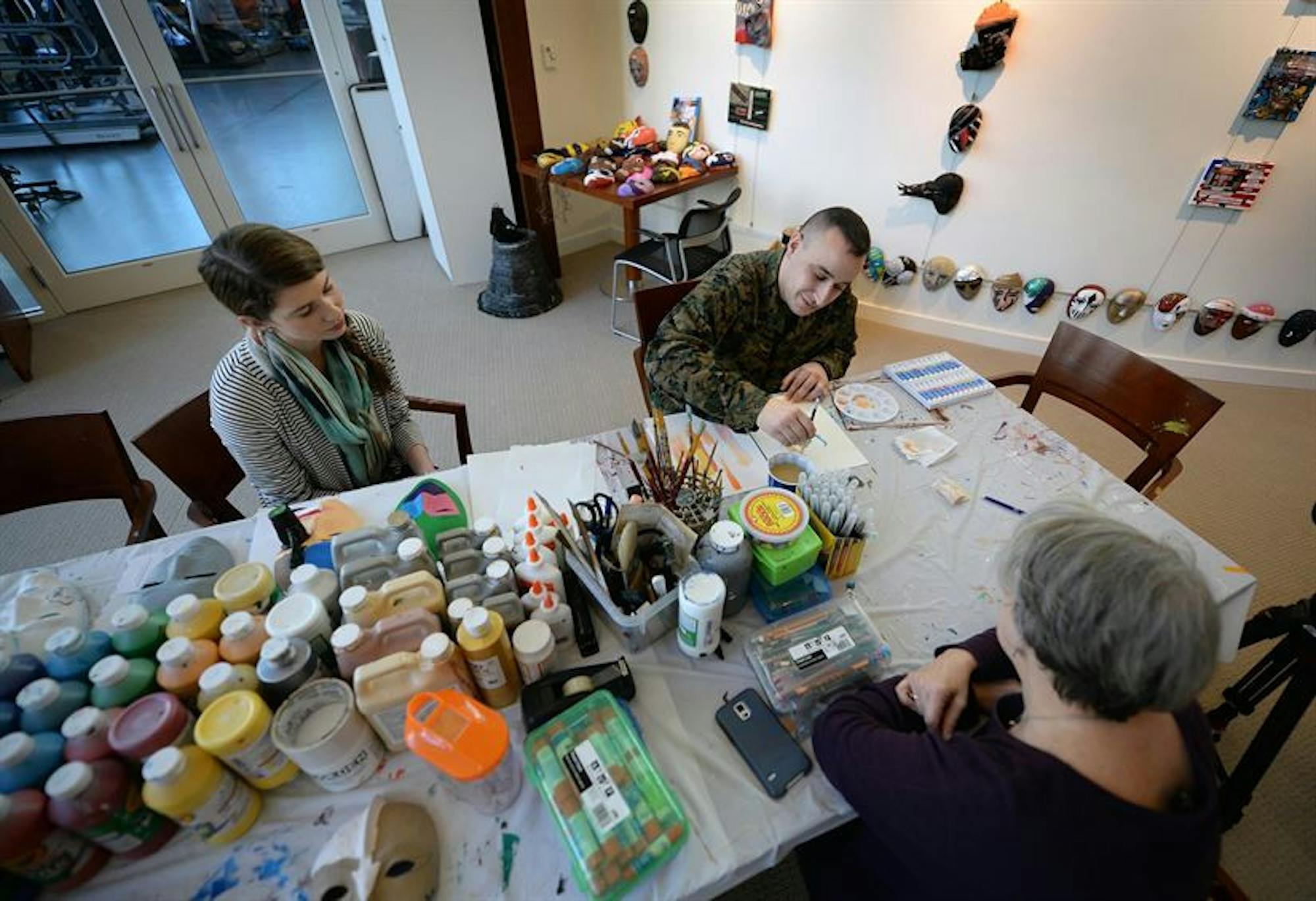Content warning:This article discusses mental health.
Art, commonly known for its poignancy and sentimentality, is often said to be healing when used to reflect trauma or melancholy. However, art in this traditional sense should not be confused with its related derivative: art therapy.
The term “art therapy” was first introduced in 1942 by Adrian Hill, a British artist who had personally benefited from painting and drawing in his recovery from tuberculosis. Throughout later decades of the 20th century, art therapy has gradually become more professional and defined. Nowadays, art therapy is considered to be a formal, standardized practice of clinical psychology that uses creative processes, such as painting, sculpting, making pottery and weaving textiles, as the means to help its clients reflect and manage their emotions and anxiety.
Art therapists are licensed professionals in subfields of psychology, such as human development and psychological and behavioral disorders. To become an art therapist in the United States, one must meet the criteria of the Art Therapy Credentials Board, which includes a master’s degree from a program approved by the American Art Therapy Association.Art therapists must also be familiar with the processes of creating art. Besides, these therapists usually work under clinical settings, such as hospitals, although some might also work in private practice, including workshops.
That being said, despite the word “therapy” in its name, art therapy is not exclusively designated for people with diagnosed mental illnesses. Rather, it is intended for relieving stress of varying intensities, ranging from emotional conflicts in daily life to serious medical conditions, both mental and physical. Art therapy does so in several ways. It helps clients access and reflect on heavy, complex emotions or thoughts otherwise difficult to access just through words. Since art may allow for more ambiguity and expressiveness than language, it can be helpful in characterizing overwhelming, suppressed or even unconscious experiences. The meditative and physically engaging act of art making itself may also be stress-relieving. Furthermore, the physical artistic products yielded from art therapy can bridge communication gaps between caregivers and art therapy participants, thus allowing caregivers to better empathize with the experiences and needs of their clients.
Rob Gray, the founder and director of the College for Educational and Clinical Art Therapy in Australia, explained the power of art therapy to help patients make sense of their unconscious thinking in a 2015 article. “Art therapy taps into the unconscious, where there is no concept of time ... Art therapy attempts to make the unconscious conscious and thus enable a fundamental change in the client’s thinking,” he wrote.
However, art therapy faces two main professional and logistical challenges. First of all, there is insufficient convincing empirical evidence that testifies to the efficacy of art therapy. Second, the interdisciplinary nature of art therapy might deter some clients, especially adults, from receiving it, due to their lack of confidence in their artistic ability, despite its ultimate purpose of processing emotions rather than creating art.
Perceived as an constructive way for hospitalized patients to destress, art therapy is offered in several medical institutions in Boston. The Dana-Farber Cancer Institute and the Massachusetts General Hospital Cancer Center both organize art therapy programs to attenuate cancer patients' stress and sense of isolation. Meanwhile, the Boston Children’s Hospital hosts the Creative Arts Program, which features an artist-in-residence program and also offers music therapy.A recent evaluation shows that the Boston Children's Hospital's arts program has alleviated the anxiety of both the patients and their families.
In general, art therapy is a novel and engaging therapeutic method for mental stress; however, its efficacy has yet to be verified by additional clinical data.
Art therapy relieves stress, provides creative outlet for expressing emotions

Marine Corps Staff Sgt. Anthony Mannino performs art therapy with guidance from Adrienne Stamper, art therapy intern, as part of his traumatic brain injury treatment and recovery at the National Intrepid Center of Excellence on March 1, 2016.





